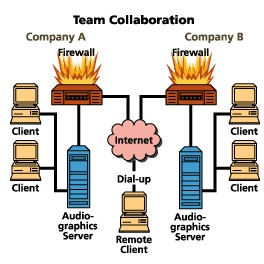|
|
DSC Tech Library
Computer Telephony Integration
 This section of our technical library presents information and documentation relating to CTI Computer Telephony Integration software and products.
Computer Telephony Integration CTI software is a rich set of phone software library routines that enable application programs to control your phone system.
This comprehensive CTI software lets you increase employee productivity, enhance customer service and reduce costs by combining the capabilities of our PACER phone system with the custom functionality of your Windows, Unix or Web applications.
Data collected by your phone ACD (Automatic Call Distribution) or IVR (Interactive Voice Response) systems can be passed to your existing PC, Unix or Web applications through our phone software.
The PACER predictive dialer can automatically call your customers and pass only connected calls to your agents. With our computer telephony software, your telephone and computer work together to provide cost-saving benefits.
This section of our technical library presents information and documentation relating to CTI Computer Telephony Integration software and products.
Computer Telephony Integration CTI software is a rich set of phone software library routines that enable application programs to control your phone system.
This comprehensive CTI software lets you increase employee productivity, enhance customer service and reduce costs by combining the capabilities of our PACER phone system with the custom functionality of your Windows, Unix or Web applications.
Data collected by your phone ACD (Automatic Call Distribution) or IVR (Interactive Voice Response) systems can be passed to your existing PC, Unix or Web applications through our phone software.
The PACER predictive dialer can automatically call your customers and pass only connected calls to your agents. With our computer telephony software, your telephone and computer work together to provide cost-saving benefits.
Computer Telephony for the Enterprise
Page 6
By Michael Sampson
WORKGROUP/TEAM COLLABORATION
Real-time team collaboration using audiographics conferencing is a key computer-telephony application. Audiographics conferencing brings together the two worlds by combining in a single application traditional telephony audioconferencing with traditional computer-based distributed whiteboarding, data and document conferencing. Traditional multiparty carrier-based audioconferencing is expensive compared with audiographics conferencing, particularly if all participants can be connected via a TCP/IP network to the audiographics conferencing server (in other words, you'll save money with this application, while delivering higher functionality).
A geographically distributed team is able to work collaboratively on a single document; each member is able to contribute ideas towards the completion of the document, with multiparty on-screen editing and audio interaction. Users frustrated by the lack of visuals in a traditional audi oconference or by the total silence of document conferencing, can now have the best of both worlds--audio and visual media is seamlessly intertwined for greater team effectiveness. The same infrastructure also can be used to deliver internal training, thereby allowing the instructor to focus on delivering the course material, rather than attempting to remotely teach participants how to use the training technology.
 The deployment of a workgroup collaboration solution will require appropriate client software for each end user (Microsoft NetMeeting is free!), internal server software for coordinating the interaction between participants, and directory software connecting end users. If spare hardware processing capacity is not available, one or more additional servers will also be required.
The deployment of a workgroup collaboration solution will require appropriate client software for each end user (Microsoft NetMeeting is free!), internal server software for coordinating the interaction between participants, and directory software connecting end users. If spare hardware processing capacity is not available, one or more additional servers will also be required.
When working towards the implementation of audiographics conferencing, consider:
- Standards compliance: H.323 for audio and T.120 for data represent the two accepted industry standards for audiographics conferencing. Microsoft NetMeeting, H.323- and T.120-compliant client software are available as a free element of the Internet Explorer family. Some companies, such as OnLive! Technologies, work feverishly to ensure NetMeeting-compliance in their range of server-based conferencing products.
- Application integration: As with CT call control, does your proposed vendor sell a toolkit solution for integrating audiographics conferencing into your other applications? Integrating team collaboration abilities with existing applications may make more sense for your workers than deploying a separate client and server infrastructure.
- Intranet integration: The network trend towards intranets with internal Web servers for publishing static or dynamic information provides the infrastructure for the next step: IP-based audiographics. The intranet infrastructure you've deployed for human-to-machine interaction, can now be extended to facilitate person-to-person interaction through audiographics conferencing. Note that your corporate firewall will need to be configured to allow users behind it to interact with those on the other side, assuming of course there is the appropriate business sign-off. For example, internal NetMeeting clients won't work with external NetMeeting clients unless the appropriate access rights are assigned.
- Directory services: Consider how you will provide the means for users to connect to others in your organization or beyond. You could recommend the use of a public-Internet based audiographics directory or deploy one as part of your internal intranet infrastructure. Note there is no agreed way of doing this--both Netscape and Microsoft advocate different approaches. Your corporate choice of Web server and Web client software will dictate the way you should go until appropriate standardization is agreed.
- Integration with the messaging infrastructure: When an audiographics session is complete, is it possible for one of the participants to return to the session files at a later date and add new insights? Does your proposed audiographics solution integrate with your e-mail infrastructure for distributing proactive notifications to the other members to request their input into the new feedback. The ideal is a single application that facilitates both real-time and non-real-time interaction--and that keeps the complete interaction history for review and input by other participants. (Sounds like a job for Lotus Notes.)
- Management tools: Does the proposed solution ship with its own standalone management tools or can you extend existing ones?
- Video integration: Full-motion video may not be an element in the initial delivery of your proposed solution, but consider the migration path for adding it in at a later time. Will video integrate seamlessly, or is a new client infrastructure required? As the technology of videoconferencing matures and the infrastructural costs decrease, the ti me will come when your users want this functionality. Knowing your proposed vendor has it in their sights is helpful. For example, video capabilities are built into Microsoft NetMeeting, though the product is functional without it.
Page
[1]
[2]
[3]
[4]
[5]
[6]
[7]
[8]
[9]
Next
|


 This section of our technical library presents information and documentation relating to CTI Computer Telephony Integration software and products.
Computer Telephony Integration CTI software is a rich set of phone software library routines that enable application programs to control your phone system.
This comprehensive CTI software lets you increase employee productivity, enhance customer service and reduce costs by combining the capabilities of our PACER phone system with the custom functionality of your Windows, Unix or Web applications.
Data collected by your phone ACD (Automatic Call Distribution) or IVR (Interactive Voice Response) systems can be passed to your existing PC, Unix or Web applications through our phone software.
The PACER predictive dialer can automatically call your customers and pass only connected calls to your agents. With our computer telephony software, your telephone and computer work together to provide cost-saving benefits.
This section of our technical library presents information and documentation relating to CTI Computer Telephony Integration software and products.
Computer Telephony Integration CTI software is a rich set of phone software library routines that enable application programs to control your phone system.
This comprehensive CTI software lets you increase employee productivity, enhance customer service and reduce costs by combining the capabilities of our PACER phone system with the custom functionality of your Windows, Unix or Web applications.
Data collected by your phone ACD (Automatic Call Distribution) or IVR (Interactive Voice Response) systems can be passed to your existing PC, Unix or Web applications through our phone software.
The PACER predictive dialer can automatically call your customers and pass only connected calls to your agents. With our computer telephony software, your telephone and computer work together to provide cost-saving benefits.
 The deployment of a workgroup collaboration solution will require appropriate client software for each end user (Microsoft NetMeeting is free!), internal server software for coordinating the interaction between participants, and directory software connecting end users. If spare hardware processing capacity is not available, one or more additional servers will also be required.
The deployment of a workgroup collaboration solution will require appropriate client software for each end user (Microsoft NetMeeting is free!), internal server software for coordinating the interaction between participants, and directory software connecting end users. If spare hardware processing capacity is not available, one or more additional servers will also be required.